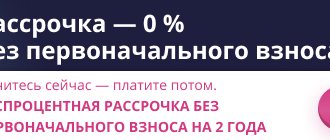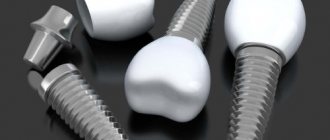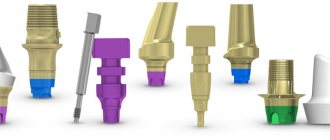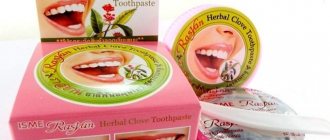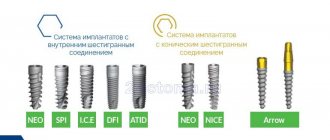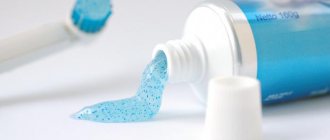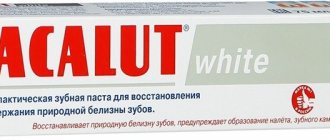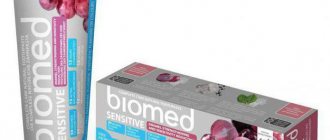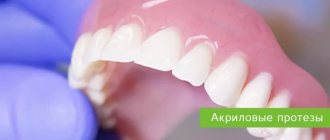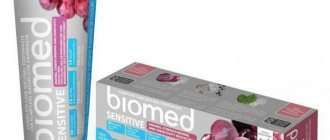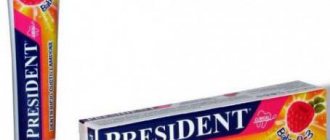It is easier to find reviews from dentists about Korean Osstem implants than reviews from patients. This is primarily due to the fact that professionals are more willing to speak out about quality - technical aspects of implantation, design features, and convenience of the system. Patients evaluate only the result. At the same time, Osstem implant systems are very popular in Moscow dental clinics - people look for reviews about them on forums, websites, and independent portals. To understand whether it is worth agreeing to the implantation of South Korean implants, it is necessary to evaluate all the advantages, disadvantages and features of the models.
History of the development of Osstem from South Korea
In the 90s, South Korea experienced rapid economic and industrial growth, most of all this affected the sphere of high technology and medicine. Today, South Korean companies are among the leading suppliers of equipment and technological solutions for dentistry in general and implantology in particular. As for the Osstem Implant System company itself, it is one of the largest players not only in the Asian but also in the world market.
The company was founded in 1992 and is considered one of the pioneers in the development and production of dental implants in Korea. However, the year of foundation does not mean that the first implant was released in 1992. The industrial license was received only in 1995, and commercial production of Osstem Implant System products started in 1997. The long journey of development and testing paid off: by the mid-2000s, the company had released two lines of implants that were in demand among specialists and managed to enter the American market. Today its products are represented in more than 50 countries. Osstem implants, patient reviews confirm this, are a high-quality and reliable implantation system.
Interesting facts about the manufacturing company
Osstem are implants that are created by representatives of the Osstem Implant corporation of the same name. To build trust in this brand, it is worth getting acquainted in more detail with the history and features of the development of this company. Here are some interesting facts:
- The motto of the company's employees is: good is the enemy of the best. This means that specialists never stop there and always move forward, improving their products,
- the company began its existence in 1992: it has existed for about 30 years - and this is simply wonderful, because... specialists had a lot of time and opportunity to conduct the necessary research on the product, refine it and confirm that it can have a long service life,
- Osstem Implant products are successfully sold in 70 countries: among them the USA, China, Japan, Germany and Russia. At the same time, it ranks 1st in the Asian market (80% of the market) and 5th in the world ranking in terms of purchaseability. This means that the brand is trusted by both local specialists and implantologists and patients all over the world. Moreover, the brand is recognized by the South Korean government as a world-class product 1.
- products have all the necessary quality certificates: FDA, CE, ISO-9001,
- Osstem Implant operates educational and research centers: the AIC training center opened in 2001, the Implant R&D Center in 2002. Also in 2008, the Bone Science Institute began operating. There is also a dental equipment center here, the Dental Equipment Research Institute, which began operating in 2012. All this suggests that the company is actively progressing, constantly improving and improving the quality of its products.
Types of Ostem implants
The current director of the company is a man with the name Kyoo-Ok Choi, which is difficult to pronounce for a Russian person. A former dental practitioner himself, Kyoo-Ok Choi states that clinical research and the production of universal and reliable implants are of particular importance to his company. The manufacturer produces several lines of implants that differ in size, shape, and thread. They are specially manufactured for all types of jaw bone, which allows the implant surgeon to select the optimal product for any patient.
TS system
Osstem TS implants are the most versatile Osstem system, which includes 3 types of implant designs for various clinical cases and bone types, as well as SA and CA surface variations. The manufacturer claims a high degree of primary stabilization in the bone. These implants can be installed using a simplified protocol. Distinctive features: double corkscrew thread, triple connection to the abutment.
The surface of all Osstem TS SA implants is treated using physical methods (sandblasting with fine aluminum particles plus acid etching). The engraftment period is 6-8 weeks.
TS III SA.
The most universal system due to a wide range of sizes. They have a conical shape that allows the use of simplified protocols when Osstem implants are installed. Reviews from doctors confirm that they are suitable for complex clinical cases, for example, sinus lift with one-step installation for bone heights up to 4 mm.
TS III CA.
TS III implants with a chemically treated hydrophilic surface: the implant is packaged in an ampoule with a CaCl2 solution. Due to hydrophilicity, the surface of the implant immediately after installation attracts a layer of blood and proteins, which ensures primary stability and rapid survival. The healing period in the jawbone is 3-4 weeks, which significantly exceeds the performance of classic implants with a traditional milled surface.
TS IV SA.
Due to their pronounced conical shape and excellent self-cutting ability, they are well stabilized even in soft bone. They are used for installation in soft bone conditions, in particular for sinus lifting.
TS II SA.
Osstem TS II implants are cylindrical in shape and designed specifically to work in dense bone conditions. Fine threads in the area of the implant neck protect against bone overheating and relieve stress on the cortical bone during implant installation and operation.
ET III SA system
These implants are produced in the USA by Osstem's partner, Hiossen Implant. They have a sandblasted SA surface, diameters vary from 2.5 to 7 mm, and the implants themselves are compatible with all kinds of standard abutments. This gives the implantologist the opportunity to accurately select the product for any patient who chooses Osstem implants. Reviews from doctors prove that the entire line is excellent for aesthetic restorations.
MS system
This is a line of solid implants (when the implant is connected to an abutment) for restoring teeth in non-standard situations: when there is a lack of bone tissue volume, as well as when installing artificial roots with immediate loading with prostheses.
Osstem MS is temporary.
Used for temporary implantation with immediate loading. Temporary implants and prosthesis last up to six months and are installed between the holes of permanent implants.
Osstem MS for narrow alveolar ridge.
The narrowest implants (diameter 2.5 - 3 millimeters) for installation in bone with limited volume. Often restorations take place in the frontal region of the jaw.
Osstem MS for removable prosthetics.
This model has a ball-shaped mount for installing a removable denture. The system is distinguished by a simplified treatment protocol and the possibility of prosthetics for completely edentulous one of the jaws.
Features of Osstem implants
An indicator of the quality of most dental implants is the surface of the screw part. Numerous treatments change the structure of the outer layer of the screw so that the human bone tissue is easily integrated into the alloy, implanted into the jaw.
The Osstem Implant company uses several treatments in the production of series, which affects the price and quality of the finished products:
- CA – surface with increased hydrophilicity. Titanium implants are sandblasted with aluminum oxides and then etched with acid. Additionally, implants with a CA surface are placed in a CaCl2 solution, which should subsequently also ensure rapid fusion of the metal with the bone.
- SA – mechanically improved surface. To process the implant, sandblasting with tiny aluminum particles and etching with acidic compounds is used.
Typical characteristics for the Osstem series are:
- high-quality titanium – for the manufacture of artificial tooth roots;
- aggressive thread with two parallel turns along the length of the entire implant - gentle installation, rigid fixation, direction control when screwing in;
- hexagonal connection with the abutment – almost hermetically sealed fit, minimal micro-slots, protection of the internal part of the implant from pathogenic microflora.
The listed parameters are present in the design of each implant - in full or in combinations beneficial to the patient. The combination of advantages is the basis of individual series of Osstem implants.
Osstem Implant coating
Ostem implants are available with several types of coatings. None of them can be called special or innovative, because in many ways they duplicate coatings that have been developed and used for a long time. By the way, company representatives gave each coating its own abbreviation in order to distinguish them from the rest.
S.A.
The coating used on most Osstem branded implants. This is an analogue of SLA - the most popular modern coating for implant systems. Like SLA, SA is produced by sandblasting followed by acid etching.
SA.
A more modern type of hydrophilic surface, which provides better wettability of the implant surface with blood, thereby reducing the risk of implant rejection and reducing the time of osseointegration.
HA.
Essentially, this is an upgrade to the SA surface - an additional layer of hydroxyapatite, which, according to the developers, increases the primary stability of implants.
Osstem implants: pros and cons
Reviews from experts indicate many advantages of Osstem implants. Price is one of them. In addition to financial benefits, the list of benefits includes the following items:
- A variety of series - to solve numerous dental problems of patients.
- Osstem abutments made of different materials – Osstem Regular, classic titanium, zirconium for installation in the smile area.
- Color marking – for quick selection of elements of the same design within the implantation protocol.
- Lifetime warranty. According to reviews, Osstem implants are almost the only budget brand with such obligations. For patients, this means providing a new artificial root if the existing screw fails.
- The survival rate is up to 99%. The indicator is comparable to many expensive brands, which positively characterizes the quality of South Korean products.
- Rate of osseointegration. With the classic implantation protocol, Osstem can be loaded with crowns within 2-3 months after installation. Other dental implants require at least six months to be completely implanted into the bone.
Features of Osstem implantation
Installation of the Osstem implant occurs in exactly the same way as in the case of other systems: implantation of the titanium root takes place according to a one-stage or two-stage (in most cases) protocol. We should not forget about the absolute contraindications to the procedure itself, in the presence of which the installation of Osstem implants (as well as any other) is impossible.
To work with various clinical cases, Korean Osstem implants have an appropriate orthopedic portfolio. Each manufactured Osstem abutment and additional prosthetic components are designed for different types of restorations: it can be either the replacement of one missing tooth or the restoration of fragments of the dentition and the entire jaw.
Dental implantation Osstem (Korea) – pros and cons
- Good value for money.
- Quite an extensive product line.
- A recognizable brand whose implants are used in many clinics. During its existence, the company has accumulated cases with long-term treatment results.
- A good system of supporting clinicians with educational courses and seminars.
- Osstem implants do not have any great competitive advantages over systems of similar class.
Indications
Installation of Osstem dental implants is recommended if a person has:
- Complete or partial edentia of both jaws (absence of teeth).
- Bone deficiency, narrow alveolar ridge (usually a congenital defect).
- Pathological mobility of teeth due to malocclusion or insufficient hygiene.
- Increased tooth wear due to bruxism or pathological occlusion.
- Trauma to teeth with damage to the root system and soft tissues.
- There is a need to install an implant if you have low or average bone density.
- Inability to wear removable dentures.
Which implants are better than Alpha Bio, Osstem or Dentium?
It's no secret that any implantological system tries to position itself from the best side, including in relation to competitors. This is especially true for economy class manufacturers, between whom there is particularly intense competition. At the same time, it is quite difficult to definitely say which implants are better: Alpha Bio or Osstem. These are two approximately equal manufacturers. Here it is better to talk about the preferences of the specialists themselves: some prefer Korean systems, while others are more accustomed to working with Israeli ones.
If we talk about Dentium and Osstem implants (Dentium is another popular Korean system and the main competitor of Osstem), then here you need to compare specific lines. In terms of their characteristics, implants from the Dentium Implantium line do not benefit in any way, and perhaps in some ways they are even inferior to Osstem implants. The Dentium SuperLine system is of higher quality and status, therefore it is considered better than standard implants from Osstem. Be that as it may, it still cannot compete with leading brands (Nobel Biocare, Straumann), but at the same time it costs much more than other economy class lines.
How to understand which dental implants are better, manufacturer ratings
Dental implants produced by Osstem are just one example of high-quality and durable prostheses that are installed in a person’s mouth by implantologists. Of course, there are other equally worthy implanting structures, and the patient has the right to choose any of them.
The countries of Europe and the USA lead the ranking in the production of implants. It is there that world-famous premium prosthetic structures are made: Astra Tech (Sweden), Nobel Biocare (Switzerland-America), Straumann (Switzerland). These brands have been producing products for dental implant surgeries for patients for more than 60 years, so they have rightfully earned such a high status.
The survival rate of implants from these manufacturers is over 99%; to install such dental structures in the patient’s mouth, a certain principle of surgical operations is used, which is followed by implantologists. The only disadvantage of installing American or European-made dental implants is the price of the product, which ranges from 35,000 to 75,000 rubles.
If we talk about the most affordable designs that make it possible to replace teeth missing in the patient’s mouth and restore the aesthetics of a smile, then you should pay attention to manufacturing countries such as Korea and Israel. We have already discussed positive reviews about Korean Osstem implants in detail in this article. Among Israeli manufacturing companies, it is worth noting Alpha BIO brand dental implants, which are distinguished by their quality, reasonable price and ease of installation.
How much do Korean Osstem implants cost?
As a rule, the price for Osstem implants in Moscow is determined by the model, the complexity of the clinical case, and the level of the clinic in which the treatment is performed. Thus, implantation with Osstem TS SA costs on average 19,000 - 23,000 rubles. As a result, the price of the finished structure with a metal-ceramic crown will be about 30,000 - 35,000 rubles, and with a zirconium crown - approximately 40,000 - 45,000 rubles. Dental restoration according to the “All on 4” concept with Korean Osstem implants will cost 180,000 - 200,000 rubles for one jaw.
Advantages and disadvantages of the brand
Osstem are implants that, although of fairly good quality, have a low cost. So, installing one artificial root will cost about 30 thousand rubles. Together with the crown, the price will be higher - it can vary from 40 to 70 thousand rubles depending on the material of the crown (metal-ceramics will cost less, prosthetics with structures made of zirconium dioxide will cost the most). The product has only one significant drawback - in fact, it is a copy of an already well-known brands presented (in particular, Straumann and Nobel), there is nothing unique about it, but this copy is very thoughtful and high-quality, which is why a large number of patients and medical practitioners continue to choose it today. However, before treatment, you should be attentive not so much to this brand, but to the professionalism of the implantologist who will select and install artificial roots. If the specialist is qualified, then even budget brands will please you for a very long time.
Snucone implants
These Korean implants began to be used for dental implantation quite recently. However, their popularity is growing rapidly, which is due to the joint participation of South Korean and German manufacturers in the production process.
This Korean dental implant is famous for its excellent quality, but has an affordable price since it is manufactured in Korea. At the same time, its production is based on German innovative technology.
It should be noted that the Snucone assortment includes traditional design solutions: improved SLA coating, double threads, high-strength connection between the implant and the adapter. Moreover, the designs of this brand can be fixed with deep penetration into the bone tissue, which promotes atrophic processes and the creation of decent aesthetics.
Snucone models can be fixed into bone of varying densities.
At the same time, this Korean implant, when restoring teeth on a turnkey basis, costs about 40,000 rubles.
DIO Implants
The Korean dental implant presented above is not popular in the Russian Federation, and it is almost impossible to find patient reviews about it. The key feature of these dental implants is the presence of the Bio Tite-H surface, which is created by German specialists. Due to this coating, it is possible to significantly shorten the engraftment period, as well as minimize the likelihood of peri-implantitis and allergic reactions. Moreover, the designs of this brand have a Tors connection, which simplifies the process of fixing the adapter and prevents its loosening.
Another feature of Dio dental systems is the simplified bonding process. However, their use is not intended in difficult situations.
This Korean dental implant has a reasonable price. At the same time, in the manufacturer’s arsenal one can find both traditional root-type structures and mini-implants for installing removable prosthetic devices in the frontal area. Narrow Fix systems are used to fix fixed bridge structures in the narrow part of the alveolar process.
Indications and contraindications for installation
The indication for implantation with systems from a Korean company is partial or complete edentia. Among the contraindications:
- poor blood clotting;
- mental disorders;
- complex pathologies of the immune system (AIDS);
- uncompensated diabetes mellitus;
- hepatitis;
- tuberculosis;
- acute infectious and inflammatory processes;
- malignant tumors;
- cardiovascular diseases;
- failure to comply with oral hygiene rules;
- unsuitable jaw tissue structure.
Before the procedure, the patient undergoes an examination, then the doctor, based on its results, makes a decision about implantation.
There are conditional contraindications, for example, smoking, alcohol abuse, drug addiction. After getting rid of bad habits, the procedure is carried out according to the classical scheme.
Average cost implants
Dental designs in the mid-price segment are inferior to premium ones in some respects. These are high-quality implants that take root well in the gums. Their use rarely causes complications. Prosthetics using them is cheaper. The cost of mid-price implants is 25-35 thousand rubles.
This category includes:
- Oraltronics
(Germany). German titanium implants with double FBR coating. They are characterized by fast and good survival rate and high primary stability. This allows you to speed up implantation, reducing the time between prosthetic stages. They have almost no contraindications; the bone settles minimally during implantation. - SuperLine
(South Korea, USA). The Dentium brand is from South Korea, and the system is developed at facilities in the USA. Installation of SuperLine implants is characterized by minimal trauma and rapid survival. Thanks to the special design of the double threaded rod, it is suitable for use in clinically difficult cases. Forms a single system with bone tissue. The model range includes both standard implants and products for one-stage implantation. - Anyridge
(South Korea). The systems of this brand are distinguished by simple and low-traumatic installation for the patient. With their help, you can carry out prosthetics even immediately after tooth extraction. They have practically no contraindications; they can be installed in dense and loose bone tissue, with a narrow bone or lack of height. The rod takes root quickly and is highly stable. The surface of the rod is coated with calcium ions, which accelerates healing. - ROOTT
(Switzerland). Implants for one-stage installation. They are used when two or more teeth are missing in the dentition. The procedure is performed under local anesthesia in one visit to the doctor. The rehabilitation period is about 3 weeks. The main advantage of this system is the absence of contraindications. It can be installed for any condition of bone tissue, for periodontal diseases. - Bicon
(USA). Bicon systems use a screwless connection. The abutment can be positioned 360 degrees. This makes the system one of the best in its segment. The procedure is minimally invasive. The rod takes root quickly and well, forming a single system with the bone tissue. - BioHorizons
(USA). Suitable for use in difficult cases - with loose bone tissue, in conditions of limited interdental space, etc. The shape, which follows the root of the tooth, facilitates installation and allows the use of implants even immediately after removal.
Bicon Implants Review
